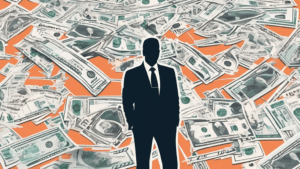
Why Skills-First Leadership Is Replacing the Ivy League Playbook in the C-Suite
The old prestige pyramid—where Ivy League degrees and blue-chip consulting backgrounds paved the way to the CEO seat—is cracking.
April 24, 2025: Silicon Valley is experiencing a sharp recalibration in artificial intelligence investment, with signs of AI fatigue emerging across venture capital, product strategy, and workforce planning. After two years of relentless hype and capital inflows, early-stage AI funding is now contracting, especially for startups without defensible intellectual property or a clear path to revenue.
Investors are increasingly cautious, prioritizing infrastructure optimization, domain-specific models, and enterprise adoption metrics over broad platform bets.
Recruiters report an oversupply of generative AI startups pitching near-identical product stacks—chatbots, copilots, and vertical LLM wrappers—many of which rely on third-party APIs and offer minimal differentiation. As a result, product-market fit scrutiny has intensified, with funds increasingly demanding early monetization and defensible use-case traction.
Cloud computing costs have become a bottleneck. Startups relying on large-scale inference for model deployment struggle to raise enough capital to sustain GPU-intensive workflows, particularly with NVIDIA chip scarcity and rising unit economics. Several early-stage AI companies have already pivoted toward AI middleware, fine-tuning services, or integrations with enterprise software ecosystems.
Larger tech firms are also reassessing their AI investment pace. Some internal R&D budgets are being reallocated from moonshot LLM efforts to model efficiency, edge deployment, and regulatory compliance tooling, especially ahead of global AI governance changes.
The slowdown isn’t universal. Niche areas like AI in industrial automation, synthetic biology, and robotics continue to attract targeted capital, where IP moats are stronger, and output metrics are easier to validate.
Silicon Valley’s current AI cycle appears to be shifting from exuberant capital deployment to operational discipline and value-chain specialization. For startups, the path forward is narrowing: outperforming on applied use cases, controlling cost structure, or risk being sidelined as investor focus consolidates around winners.

The old prestige pyramid—where Ivy League degrees and blue-chip consulting backgrounds paved the way to the CEO seat—is cracking.

Loud leaders once ruled the boardroom. Charisma was currency. Big talk drove big valuations.

But the CEOs who make history in downturns aren’t the ones with the deepest cuts

Companies invest millions in leadership development, yet many of their best executives leave within a few years. Why?

The most successful business leaders don’t just identify gaps in the market; they anticipate future needs before anyone else.

With technological advancements, shifting consumer expectations, and global interconnectedness, the role of business leaders

Following a distinguished Law Enforcement career Joe McGee founded The Securitatem Group to provide contemporary global operational specialist security and specialist security training products and services for private clients, corporate organisations, and Government bodies. They deliver a wide range of services, including complete end-to-end protection packages, close protection, residential security, protection drivers, and online and physical installations. They provide covert and overt investigations and specialist surveillance services with a Broad range of weapons and tactical-based training, including conflict management, risk and threat management, tactical training, tactical medicine, and command and control training.

Jay Wright, CEO and Co-Owner of Virgin Wines infectious energy, enthusiasm, passion and drive has been instrumental in creating an environment that encourages talent to thrive and a culture that puts the customer at the very heart of every decision-making process.

Fabio de Concilio is the visionary CEO & Chairman of the Board at Farmacosmo, a leading organization dedicated to mental health and community support services. With a deep commitment to identifying and meeting customer needs, Fabio ensures that high standards are maintained across the board.

Character Determines Destiny – so said Aristotle. And David CM Carter believes that more than anything else. For David, it has been numerous years of research into codifying Entelechy Academy’s 54 character qualities that underpin everything he stands for as a leader and teacher.


Leave us a message
Subscribe
Fill the form our team will contact you
Advertise with us
Fill the form our team will contact you